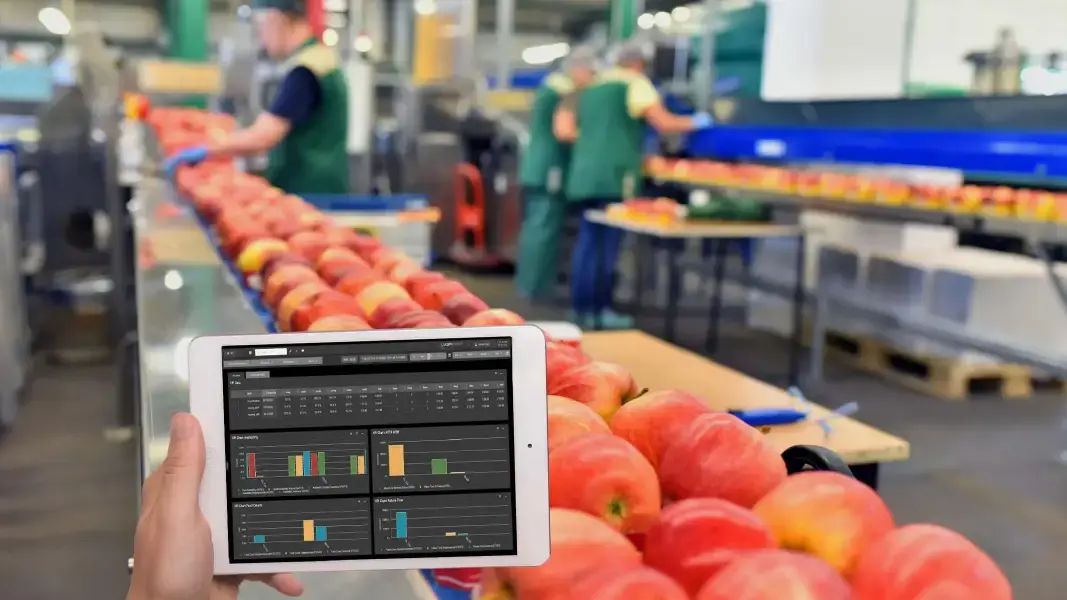
Working in automation, we know the role of a PLC – they’re the brains behind machines, executing real-time control and monitoring of equipment. But what about higher-level systems that tie everything together, like MES and SCADA? In this blog, we break down the similarities and differences between these two systems to give you a clearer understanding of how they fit into the bigger picture of modern manufacturing.
What Are SCADA Systems?
SCADA (Supervisory Control and Data Acquisition) systems are designed to monitor and control equipment across large industrial sites. Think of SCADA as the interface that gathers real-time data from machines (via PLCs, sensors, etc.) and presents that information to operators. The system provides a graphical interface to track and respond to issues, alarms, or changing conditions on the factory floor or within a distributed network, like a power grid.
- Main Purpose: Real-time control and monitoring of equipment and processes.
- How it Works: SCADA collects data from PLCs and sensors, displays it in an understandable format (like dashboards or graphical user interfaces), and allows operators to interact with the system to control machinery.
- Example: A SCADA system might alert an operator to a pressure drop in a pipeline, allowing them to adjust valves remotely or activate emergency procedures.

What Are MES Systems?
MES (Manufacturing Execution System) is a broader, higher-level system that tracks and manages the entire manufacturing process from raw material to finished product. While SCADA focuses on real-time equipment monitoring, MES is about optimizing and controlling the production process to ensure efficiency, quality, and regulatory compliance.
- Main Purpose: Manage and optimize manufacturing processes from start to finish.
- How it Works: MES gathers data from SCADA, PLCs, and other sources to provide insights into production workflows, machine performance, and material use. It helps ensure everything runs smoothly, minimizing downtime, waste, and improving productivity.
- Example: An MES might trigger a maintenance task when it detects a certain number of cycles or wear on equipment, or it could automatically track the production status of a batch from start to finish.

Similarities
Both MES and SCADA systems deal with real-time data, and they work hand-in-hand to ensure a smooth manufacturing process:
- Data Collection: Both systems rely on data from PLCs and sensors to provide accurate and timely information about equipment and production.
- User Interaction: SCADA systems focus on immediate, real-time adjustments, while MES systems allow for higher-level decision-making based on longer-term trends and production workflows.
Key Differences
- Scope: SCADA is focused on real-time monitoring and control of machines or processes, while MES covers the entire production lifecycle, focusing on efficiency and quality control across all stages of manufacturing.
- User Roles: SCADA is more often used by operators on the plant floor, managing day-to-day operations. MES is typically used by production managers and engineers who need to analyze overall production performance and make strategic decisions.
- Level of Detail: SCADA systems provide real-time feedback about specific machines or processes. MES takes a more holistic approach, integrating data from multiple systems to manage everything from material tracking to production scheduling.
Summary
Both MES and SCADA are essential to modern manufacturing, but they serve different roles. SCADA keeps the factory running smoothly in real time, while MES ensures that the overall manufacturing process is efficient, meeting goals for quality and productivity. Understanding how they work together will give you better insight into the world of industrial automation and the digital transformation happening on factory floors today. Modern systems, like Ignition, are designed to blur the lines between SCADA and MES, often combining both functions into a single software package.
Understanding SCADA and MES systems is crucial for us because these systems are at the heart of data collection and condition monitoring, and essential for optimizing production processes. As Industry 4.0 initiatives push for smarter, more connected factories, having knowledge of SCADA and MES allows us to guide customers in integrating these systems to enhance real-time decision-making, predictive maintenance, and overall operational efficiency. This expertise helps position us as trusted advisors who can support clients' digital transformation journeys

